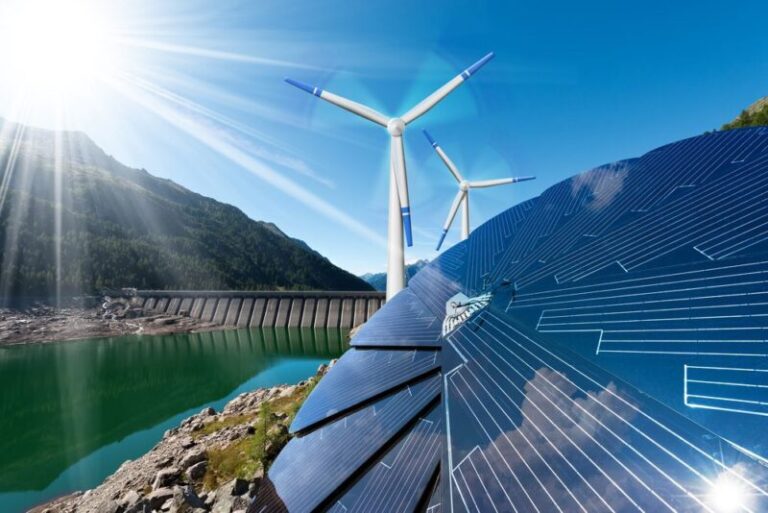The African electricity mix shows significant disparities in 2024, with on one side Kenya, the undisputed leader with 90% of its electricity from renewable sources, and on the other side Algeria, struggling to exceed 1%. Between ecological ambitions and dependence on fossil fuels, strategies differ from country to country. An analysis of trends and challenges to be addressed.
Kenya (90%): a model of successful transition
Thanks to massive exploitation of geothermal energy (41% of the mix), as well as hydropower, solar, and wind, Kenya stands out as a model to follow in terms of energy transition. The country continues to invest, with the Menengai project adding 465 MW by 2025.
However, structural challenges remain: significant technical losses (23%), vandalism of infrastructure, and delays in nuclear energy (the first plant is expected in 2034). Despite this, the IEA praises the Kenyan model which proves that a low-carbon transition is possible in Africa.
Morocco (24%): a promising but slowed transition
With 24% of its electricity from renewables, Morocco ranks second among the studied African countries. Driven by a growth in photovoltaic solar (+57% per year) and flagship projects like Noor Ouarzazate, the kingdom aims to reach 52% renewable energy by 2030.
However, 60% of electricity still comes from coal, while droughts force the country to invest in energy-intensive desalination plants. The transition therefore relies on battery storage and a modernization of the electrical grid. The stakes are high: to combine industrial competitiveness and climate resilience.
Nigeria (23%): enormous potential but structural challenges
With 23% renewables, mainly from hydropower, Nigeria is in third place. Despite a significant solar potential, the country remains largely dependent on natural gas (77%), which slows its transition.
Initiatives like the 1.26 GW of solar mini-grids in rural areas are encouraging, but 60% of the population still lacks stable access to electricity. The 2023 electricity law, which aims for liberalization of the sector, could improve the situation, provided there is a modernization of infrastructure.
South Africa (10%): coal as a major obstacle
Dominated by coal (80%), South Africa struggles to accelerate its energy transition. Renewables account for barely 10% of the mix, despite the addition of 4.4 GW of solar and wind in 2024.
However, obstacles persist: frequent power outages, lack of modernization of the grid, and political blockages. Despite projects for energy storage (4 GW of batteries), the government strategy continues to favor gas and coal, thus delaying the decarbonization of the sector.
Senegal (15%): between ambitions and dependence on gas
With 15% renewables, Senegal is trying to accelerate its transition, notably with the Bokhol solar plant and a goal of 40% by 2030.
However, the country remains largely dependent on fuel oil (85%) and is relying on offshore gas, particularly with the Cap des Biches (120 MW) and Saint-Louis (255 MW) plants. The gradual removal of energy subsidies and the development of solar micro-grids could improve the situation, but access to electricity remains a challenge for 38% of the rural population.
Egypt (5%): nuclear ambitions and green hydrogen, but dependence on fossils
With only 5% renewables, Egypt struggles to reduce its dependence on natural gas, despite solar parks like Benban. The country is betting on nuclear (4.8 GW at El Dabaa) and green hydrogen, but these solutions are still long-term.
Between gas shortages, frequent blackouts, and LNG imports, Egypt is delaying the growth of renewables. The recent 50% increase in electricity tariffs illustrates the dilemma: how to finance the transition while avoiding a social crisis?
Algeria (1%): a transition at a standstill
With only 1% of renewable energy, Algeria is at the bottom of the pack. Despite an exceptional solar potential (over 3,000 hours of sunshine per year), the country is 99% dependent on natural gas.
The 3 GW solar project, launched with Sonatrach and Eni, remains marginal compared to gas exports and massive subsidies (40% of the national budget) that hinder innovation.
Facing a record demand (19 GW in 2024) and a decline in gas production (-4% since 2022), Algeria will have to choose: continue its fossil rent or invest heavily in renewable energy.
Conclusion: a continent with multiple speeds
While some countries like Kenya and Morocco are advancing on the path of renewable energy, others like Algeria and South Africa remain heavily dependent on fossil fuels.
The energy transition in Africa will depend on several factors:
✅ Investments in electrical infrastructure
✅ Reforms to liberalize the energy market
✅ Access to international financing
✅ Raising awareness among populations and combating fossil fuel subsidies
The future of the African energy mix will depend on the ability of states to balance economic development and green transition.
With LesEco


